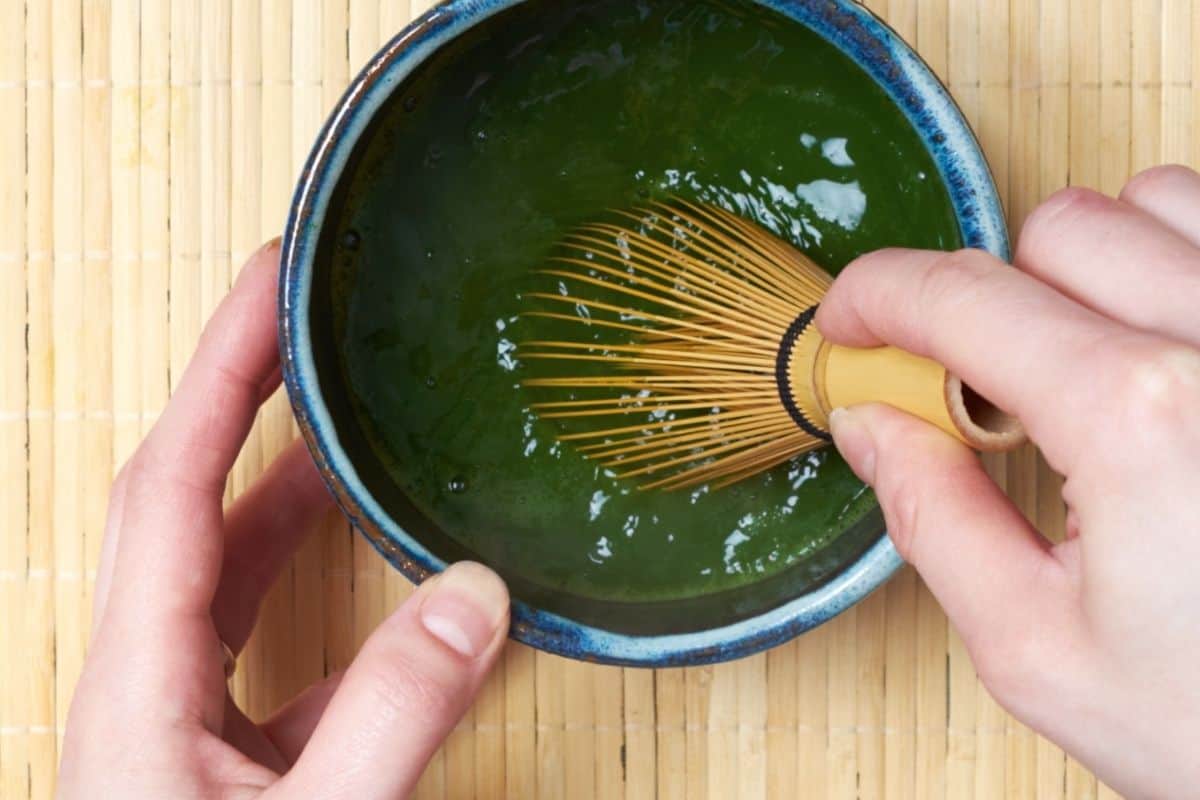I loved attending my first authentic Japanese Tea ceremony in Kyoto. It is, in fact where the practice began centuries ago. The ritual quickly spread across the country and has become ubiquitous across Japan. The experience of a quiet room and only the sounds of the tea being prepared was almost hypnotic to me.
There are many intricate movements in the Japanese Tea Ceremony.
Japanese sweets are sometimes served (called wagashi) before consuming the tea.
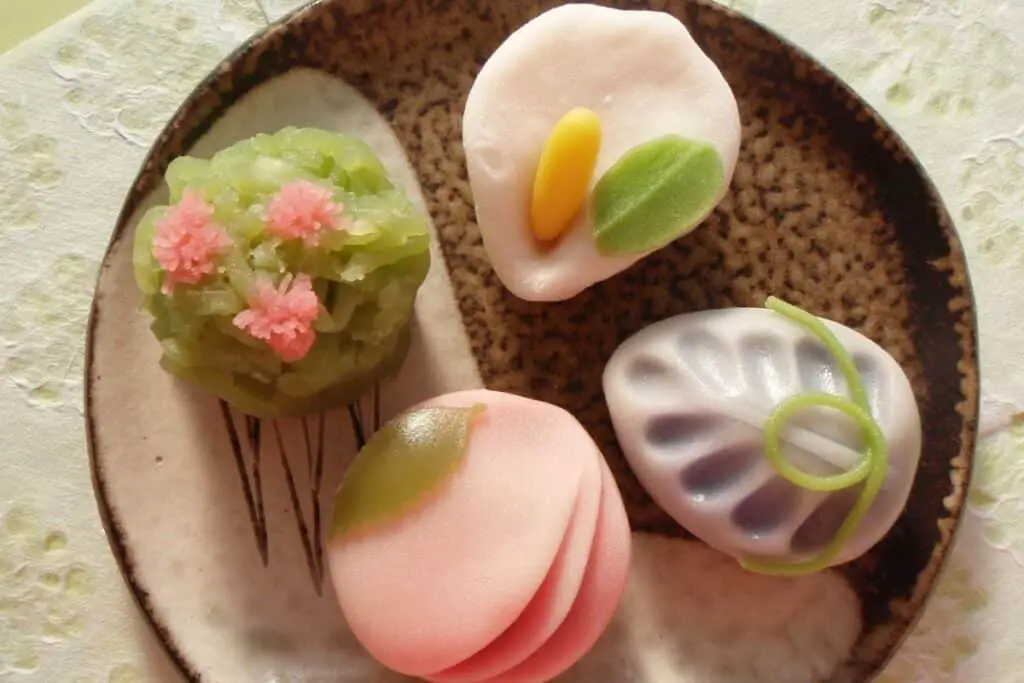
The host will start the tea ceremony by ritually cleansing the tools (the whisk, ladle, and bowl). Next, thick matcha tea is whisked in a bowl with a ratio of 3:1 hot water to tea to a foamy consistency. The bowl is then passed to each guest and cleaned by their napkin or cloth (fukusa or kaishi).
Once the tea is consumed and each person cleans the bowl it is passed to the next guest. Often there is an order of who gets the first sip out of the shared bowl. A guest of honor or possibly someone of high rank or special standing would be the first person to partake. Once each guest has drunk from the bowl is passed back to the host to be cleaned.
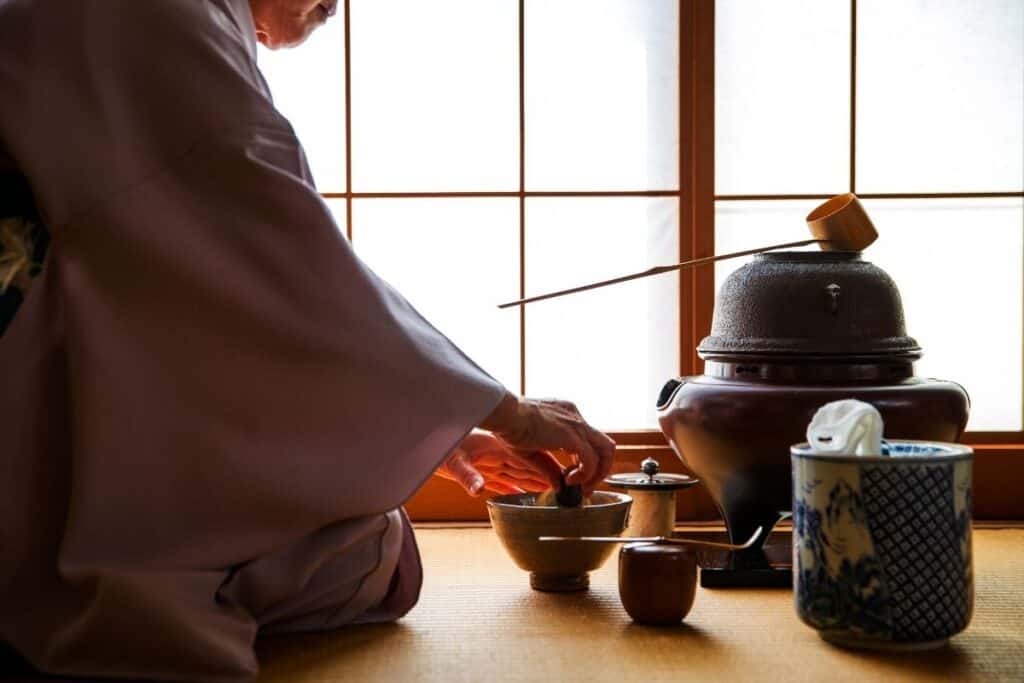
In some instances, a second-round is tea is made and is a thinner tea made with matcha but is mixed at a 1:1 ratio of very hot water to the tea powder. Although for tourists this second round of tea is not included because of the amount of time taken to do so. Its dependant on whether or not it’s being performed with pure authenticity or just to introduce foreigners to the basic process.
After stumbling my way through my first encounter with the tea ceremony I realized that there were probably things I should have said or done. With a little research and asking lots of questions to my then guide, I learned the dos and don’ts of attending the ceremony.
As a general rule maintain silence and make sure if you speak to do so in a whisper. Make sure that you maintain a reverential attitude to the host. By following this simple advice you will enjoy the tea ceremony and show gratitude to your host who studied for many hours to learn the art.
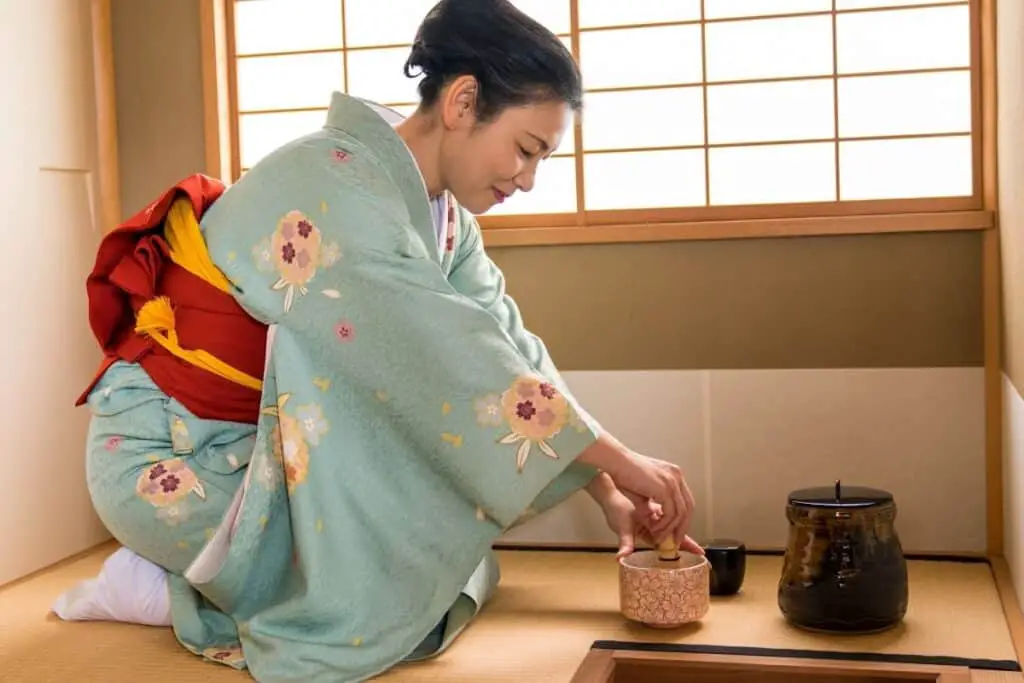
What nature of dress is expected at a tea ceremony? As tourists from the west, we tend to dress in an ultra-casual way. However, a real tea ceremony is something that we as outsiders should show respect to and at the very least dress in a more conservative and respectful way. As a general rule dress as though you were at a wedding, suit and ties are not necessary but overly revealing clothing, flip flops, and streetwear is not your best choice.
Perhaps my favorite part of the Japanese tea ceremony is enjoying the sweets before having the actual tea.
Wagashi (wa-gashi) is sweets that are sometimes served just before consuming matcha tea which can have somewhat of a bitter taste to the western palate. The sweets themselves are not the same as western sweets and confectionary desserts containing much less sugar having a very delicate flavor.
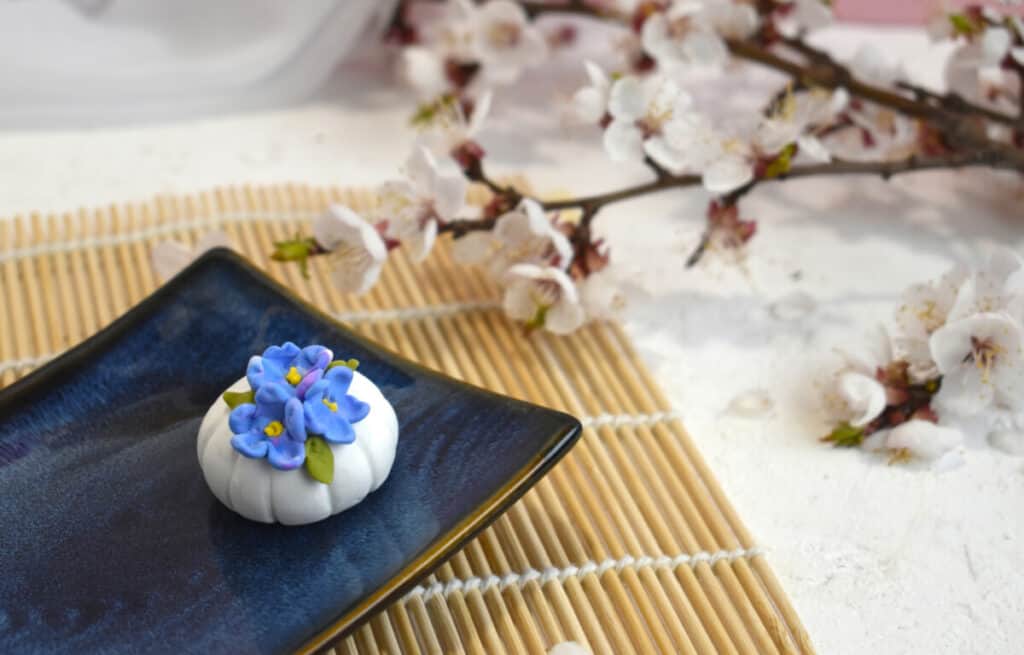
Being seated at the tea ceremony turned out to be a little more difficult for me than I would have imagined. I’m slightly taller and larger than the average westerner and definitely so when compared to the average Japanese person.
It is recommended to sit with knees in front of you and your legs tucked underneath and feet pointed back. However, some westerners find this position to be uncomfortable, and sitting in a manner that is more comfortable might be a better idea since the ceremony may last longer if there is a larger group of tourists.
If your lucky enough to find a tea ceremony being held at a traditional home and garden setting its an absolutely beautiful place to experience the whole thing.
Tea is the elixir of life
Eisai
As a general rule tea ceremonies are held in a tatami room. Rooms that have tatami mats made of straw. Sometimes the entryway to the room has a lower than average doorway so that the person entering must bow to show an attitude of humility and humbleness.
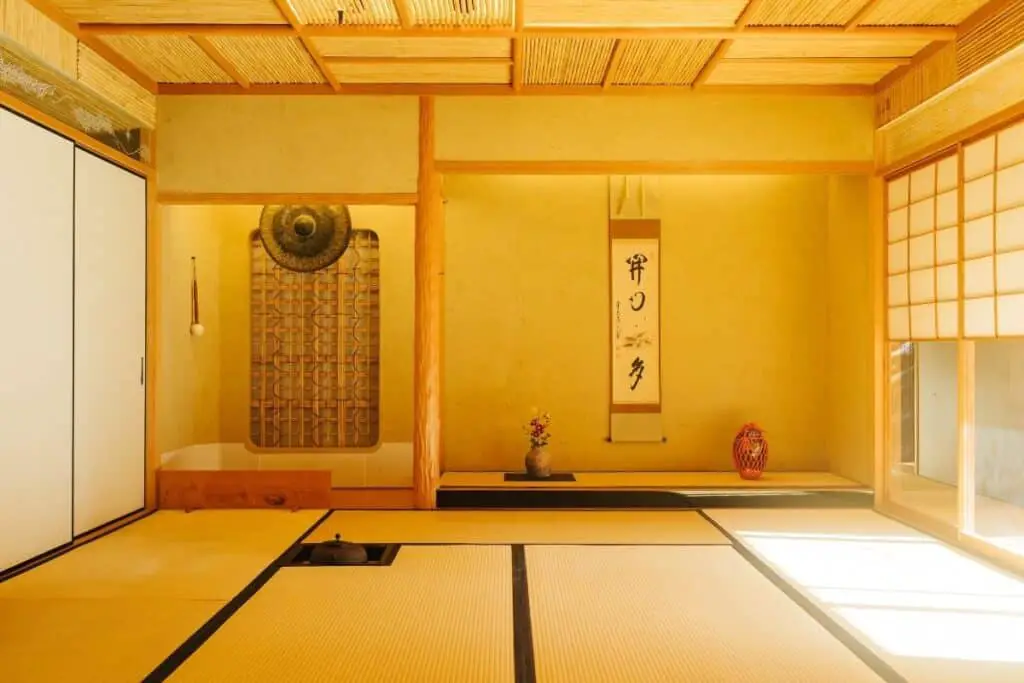
Some gardens will also contain a ceremonial tea house. Generally, a small building within the garden is separate from the main house or building. The tea garden will often have a short path with manicured shrubs and plants. Many gardens will have bamboo or wooden gate and sometimes a stone or gravel paved path.
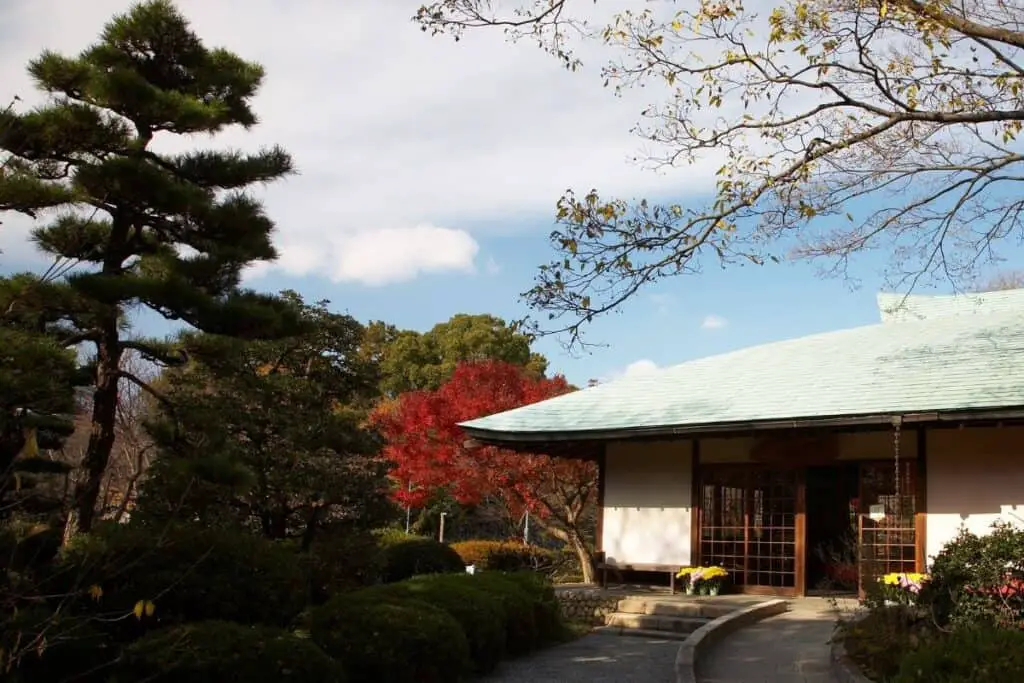
Some garden tea houses may have an area just outside of the entrance to ceremonially wash or purify your hands. If you see a basin with a bamboo ladle then this is most likely used for this purpose. This is generally a four-step process. Take the ladle by your right hand and scoop water and wash your left hand. Now perform the same action with the opposite hand. Switch the ladle back to the right hand and pour water into your left hand and wash your mouth.
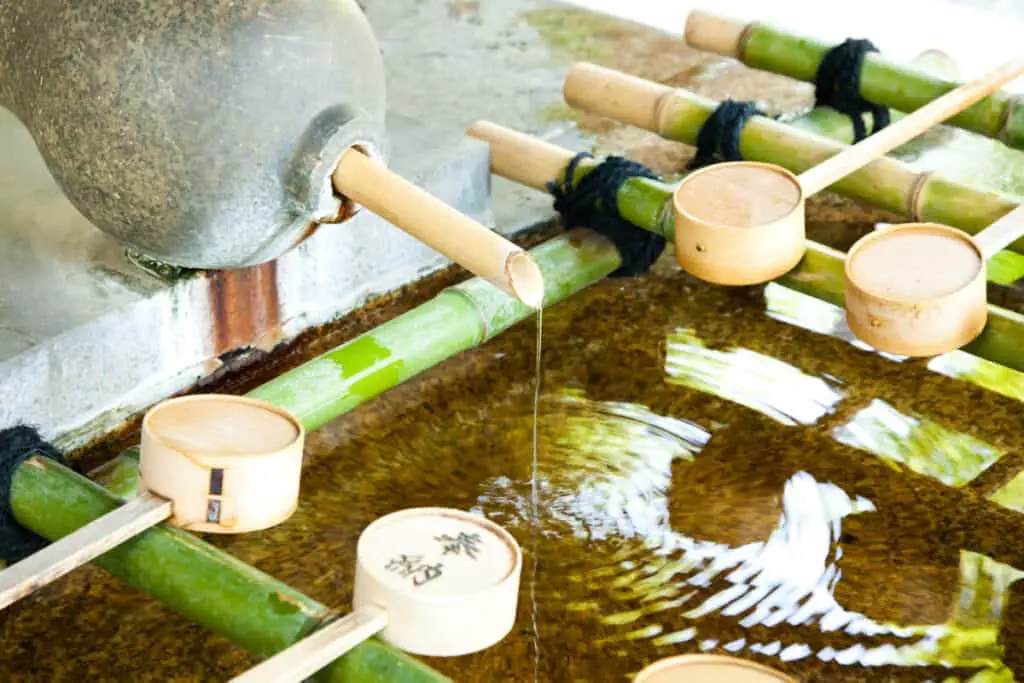
This same type of ritual washing or cleansing is done at many temples and shrines. It should go without saying but once at the fox shrine in Tokyo we witnessed a woman performing this ritual behavior and then spitting the water back into the clean water basin. Although it was a very large basin perhaps 5 or 6 feet in length it was a definite no-no.
A more formal tea ceremony might be much more than just the previously mentioned highlights. Formal tea ceremonies can last for up to four hours and be accompanied by sake (Japanese rice wine) and a more traditional meal. Although this is rarer for tourists who just want to experience the overall event.
A tea ceremony meal can consist of miso soup, rice, and up to eight separate dishes containing a small amount of food on each of them.
Again this is a more rare meal and might only happen if you’re attending a tea ceremony with only Japanese friends. Dress at this type of more formal event might involve all participants wearing kimonos. Yes, men do wear kimonos it’s a kimono made for men. Although for myself I’ve found the sizes to be on the small side.
For me, it’s easier to remember by knowing the overall high points of the tea ceremony. So here they are…
- Bow to your host upon arrival
- Rinse your hand and mouth if there is a basin
- Remove your shoes before entering the tatami room
- Sweets and Sake may be served at this point
- Guest may leave the room
- Host cleans the room
- Host sets up flower arrangements
- Guest called back into the tea room
- Guest ritually wash their hands and mouth again
- Host cleans all tools and bowls ritually
- Bows are exchanged
- Host ritually makes the tea
- First guest is given the tea
- Guest sips from the bowl
- Guest wips the bowls edge
- Guest hands the bowl to the next guest
- Each guest will hand off until all have sipped
In listing all of these intricate steps this is not a typical tourists tea ceremony you will encounter in Japan. Most likely it will be much shorter and much less formal. If you are invited to something this special it’s best to take your cues from the other guest. Japanese people are very graceful and forgiving to foreigners who don’t fully comprehend the social norms and rules.
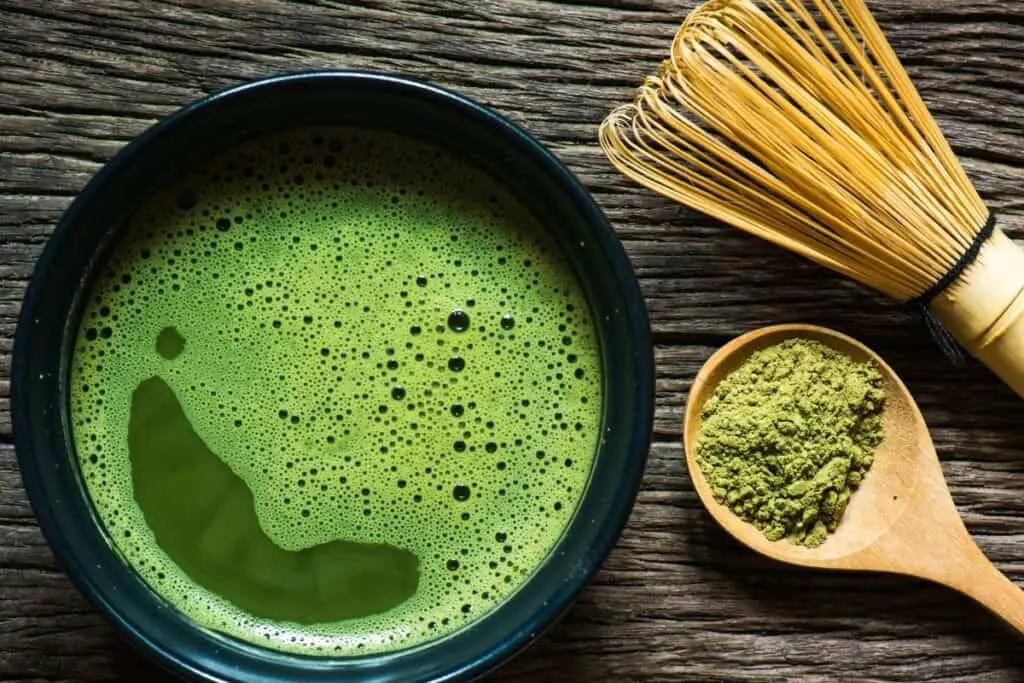
Most tourists will encounter a very casual and quick ceremony. On average Japanese tea ceremonies last about four minutes per person and about twenty minutes for the host to prepare the tea.
So what is the true meaning of the Japanese tea ceremony?
The tea ceremony is done to awaken the person’s spiritual and physical sides by interacting with all five of a person’s senses. Touch, taste, smell, sight, and hearing. It is performed to bring peace and calm to a person inner being through tranquility.
I look forward to my next trip to Kyoto and I am sure I will find a new and tranquil place to enjoy the green foamy goodness of matcha.

